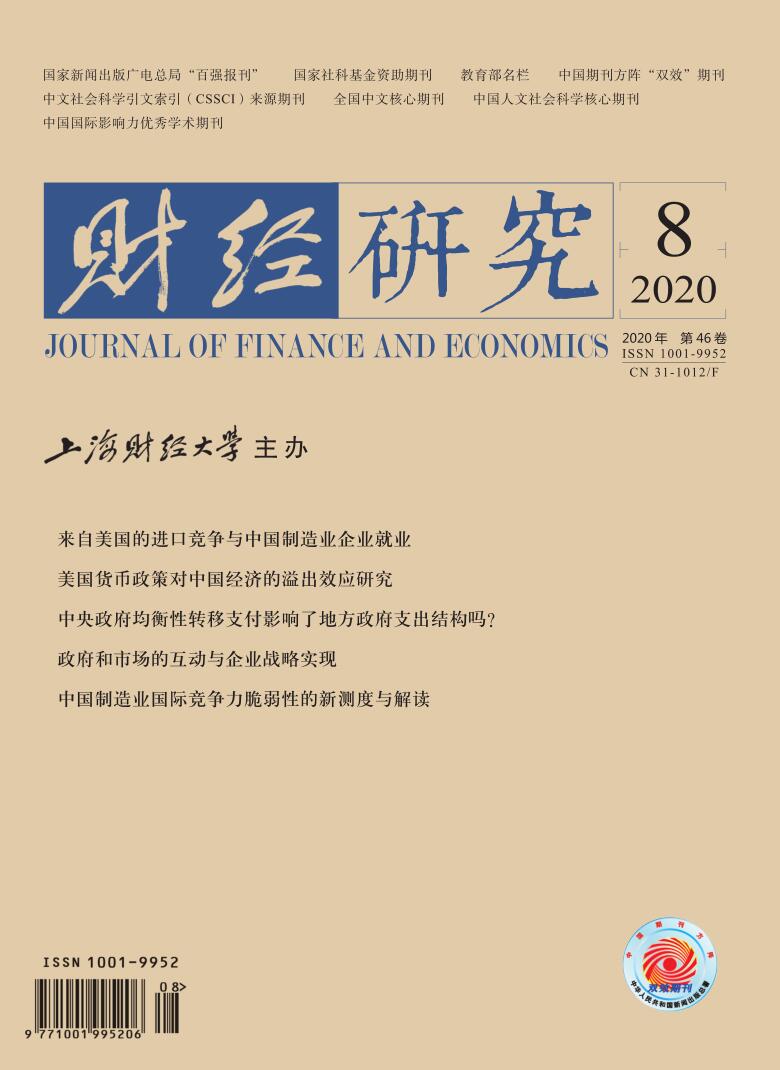职业培训不仅是解决农民工自身就业的需要,也是稳就业、保增长和全面完成精准扶贫任务的重要途径。文章基于中西部地区13个省份的4 138份农民工调查数据,采用倾向得分匹配(PSM)模型,实证检验了职业培训对农民工工资收入的影响效应。实证结果表明:(1)参加职业培训对农民工工资收入具有显著的正向影响,其小时工资因接受职业培训而增加1.88元,“授人以渔”的正向效应较为明显。(2)农民工通过职业培训获得的“工资收入溢价”具有异质性,参加引导性培训使农民工小时工资提升4.07元,参加技能性培训和偶尔参加技能性培训使农民工小时工资分别提升1.61元和1.50元,而其他类型培训对农民工工资获得的影响并不显著,“授人以何渔”的工资效应具有明显差异。文章的研究表明,农民工职业培训可以通过提升工资水平而改变农民工未来就业和发展的基础。因此,政府部门在制定职业培训的相关政策时,不仅应重视“授人以渔”,还应充分重视“授人以何渔”,从而实现精准扶贫由“输血”向“造血”的根本转变。
“授人以渔”有效吗?——农民工职业培训的工资效应检验
摘要
参考文献
1 程名望,盖庆恩,Jin Y H,等. 人力资本积累与农户收入增长[J]. 经济研究,2016,(1):168−181. DOI:10.3969/j.issn.1672-5719.2016.01.129
3 国家统计局. 2016年农民工监测调查报告[EB/OL]. http://www.stats.gov.cn/tjsj/zxfb/201704/t20170428_1489334.html, 2017-04-28.
7 王海港,黄少安,李琴,等. 职业技能培训对农村居民非农收入的影响[J]. 经济研究,2009,(9):128−139. DOI:10.3969/j.issn.1005-913X.2009.09.057
13 张晓恒,朱战国,刘余,等. 职业技能培训与新生代农民工收入增长−基于倾向得分匹配模型的分析[J]. 统计与信息论坛,2017,(3):114−120. DOI:10.3969/j.issn.1007-3116.2017.03.016
16 赵德昭. FDI对农村剩余劳动力转移的影响:集聚抑或是扩散[J]. 财贸经济,2018,(1):118−131. DOI:10.3969/j.issn.1002-8102.2018.01.008
17 赵延东,王奋宇. 城乡流动人口的经济地位获得及决定因素[J]. 中国人口科学,2002,(4):8−15. DOI:10.3969/j.issn.1000-7881.2002.04.002
18 Angrist J D,Krueger A B. Instrumental variables and the search for identification:From supply and demand to natural experiments[J]. Journal of Economic Perspectives,2001,15(4): 69−85. DOI:10.1257/jep.15.4.69
19 Becker G S. Investment in human capital:A theoretical analysis[J]. Journal of Political Economy,1962,70(5): 9−49. DOI:10.1086/258724
20 Blinder A S. Wage discrimination:Reduced form and structural estimates[J]. The Journal of Human Resources,1973,8(4): 436−455. DOI:10.2307/144855
21 Flores C A,Flores-Lagunes A,Gonzalez A,et al. Estimating the effects of length of exposure to instruction in a training program:The case of job corps[J]. Review of Economics and Statistics,2012,94(1): 153−171. DOI:10.1162/REST_a_00177
22 Haelermans C,Borghans L. Wage effects of on-the-job training:A meta-analysis[J]. British Journal of Industrial Relations,2012,50(3): 502−528. DOI:10.1111/j.1467-8543.2012.00890.x
23 Hawley S R,St. Romain T,Rempel S L,et al Generating social capital through public health leadership training:A six-year assessment[J]. Health Education Research,2012,27(4): 671−679. DOI:10.1093/her/cyr037
24 Heckman J,Ichimura H,Smith J,et al. Characterizing selection bias using experimental data[J]. Econometrica,1998,66(5): 1017−1098. DOI:10.2307/2999630
25 Hughes J,Maurer-Fazio M. Effects of marriage,education and occupation on the female/male wage gap in China[J]. Pacific Economic Review,2002,7(1): 137−156. DOI:10.1111/1468-0106.00156
27 Kluve J,Schneider H,Uhlendorff A,et al. Evaluating continuous training programmes by using the generalized propensity score[J]. Journal of the Royal Statistical Society:Series A (Statistics in Society),2012,175(2): 587−617. DOI:10.1111/j.1467-985X.2011.01000.x
28 Konings J,Vanormelingen S. The impact of training on productivity and wages:Firm-level evidence[J]. Review of Economics and Statistics,2015,97(2): 485−497. DOI:10.1162/REST_a_00460
29 Lechner M,Miquel R,Wunsch C. Long-run effects of public sector sponsored training in West Germany[J]. Journal of the European Economic Association,2011,9(4): 742−784. DOI:10.1111/j.1542-4774.2011.01029.x
30 Lucas JrR E. On the mechanics of economic development[J]. Journal of Monetary Economics,1988,22(1): 3−42. DOI:10.1016/0304-3932(88)90168-7
31 Mincer J. On-the-job training:Costs,returns,and some implications[J]. Journal of Political Economy,1962,70(5): 50−79. DOI:10.1086/258725
32 Oaxaca R L,Ransom M R. On discrimination and the decomposition of wage differentials[J]. Journal of Econometrics,1994,61(1): 5−21. DOI:10.1016/0304-4076(94)90074-4
33 Romer P M. Increasing returns and long-run growth[J]. Journal of Political Economy,1986,94(5): 1002−1037. DOI:10.1086/261420
34 Rosenbaum P R,Rubin D B. The central role of the propensity score in observational studies for causal effects[J]. Biometrika,1983,70(1): 41−55. DOI:10.1093/biomet/70.1.41
35 Schoellman T. Early childhood human capital and development[J]. American Economic Journal:Macroeconomics,2016,8(3): 145−174. DOI:10.1257/mac.20150117
37 Yang D T. Education and allocativeefficiency:Household income growth during rural reforms in China[J]. Journal of Development Economics,2004,74(1): 137−162. DOI:10.1016/j.jdeveco.2003.12.007
38 Zhang LX,Huang J K,Rozelle S. Employment,emerging labor markets,and the role of education in rural China[J]. China Economic Review,2002,13(2-3): 313−328. DOI:10.1016/S1043-951X(02)00075-5
引用本文
赵德昭, 耿之斌. “授人以渔”有效吗?——农民工职业培训的工资效应检验[J]. 财经研究, 2020, 46(8): 34-48.
导出参考文献,格式为:





 4911
4911  5411
5411

